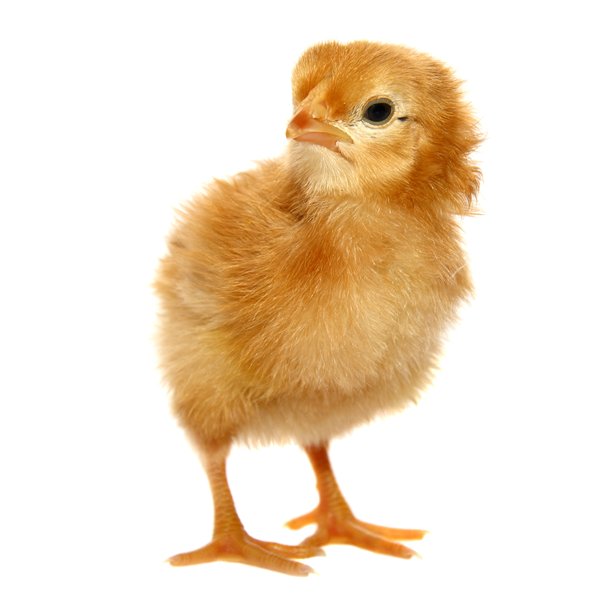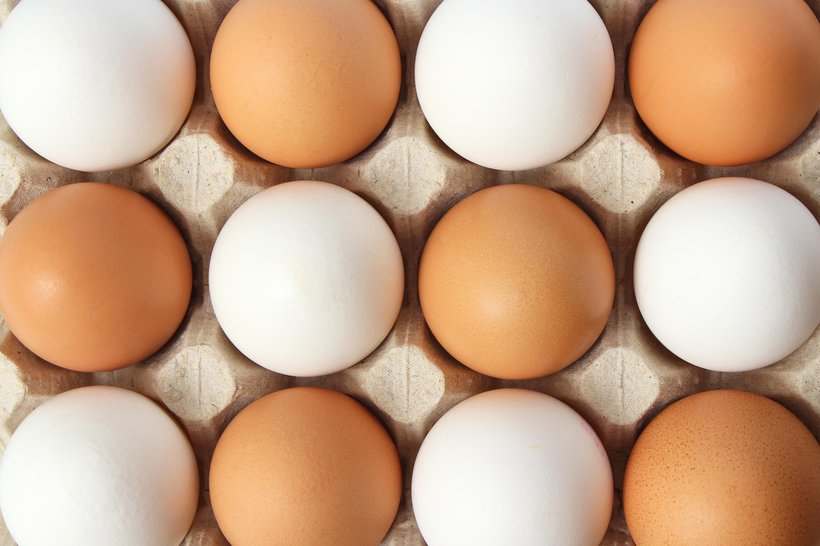
Published on Oct. 8, 2020
8 Egg facts you might not knew
Eggs are packed in protein and rich in nutrients, and luckily one of the most affordable superfoods you can buy. Next to nutritious, they are also super delicious! Below we have listed some amazing facts about eggs you need to know.
The color of the eggshell doesn’t indicate the nutritional advantages
It’s a myth that the egg’s shell color is an indicator of the quality or nutritional value of an egg. The truth is that the breed of the hen decides what the color of the egg will be. Blue, green, and (chocolate) brown eggs all look more unique and interesting than white eggs, but just because white eggs are lacking in eggshell color doesn't mean they're lacking in nutrition. The differences in eggshell color are solely due to genetics. So please keep the following in mind: if a blue egg-laying chicken is raised under the same conditions as a brown or white egg-laying chicken, there will be no difference in nutrition or taste between the different colored eggs.
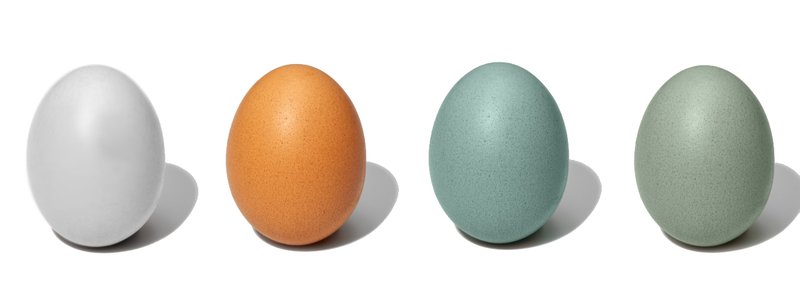
The story behind blue eggs
Have you ever seen a blue chicken egg? According to a study by the University of Nottingham, over 500 years ago, a virus infected a species of native South American chickens (the Mapuche fowl). Viruses are well known to cause foodborne illnesses, but viruses can also shape evolution and the diversity of species. In their study the researchers found the cause of the blue-colored eggshell was an ancient and harmless retrovirus. This retrovirus infestation resulted in a genetic mutation that triggered the accumulation of green-blue bile pigment (biliverdin) in the eggshell as it develops in the hen.
Take a closer look at the chicken earlobes, they can predict the eggshell color of the eggs they will lay
A somewhat strange fact, but true: the color of a hen’s earlobes—yes, chickens have earlobes—is a very good indicator of the shell color of the eggs she will lay. In general, chickens with white earlobes lay white eggs, while chicken with pink or red earlobes lay tinted or brown eggs. This fun fact is unfortunately not true when birds are producing green or blue eggs.
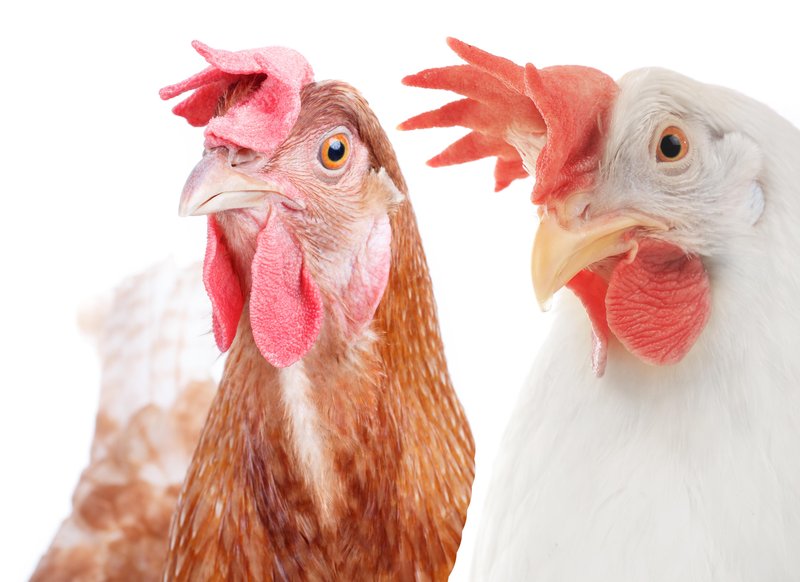
Brown eggs tend to be more expensive than white
Yes, brown eggs are typically more expensive than white eggs, but unlike what you may have assumed, their higher price has nothing to do with higher quality. In general, the cost to produce a brown egg is higher as the hens that lay them are heavier than the ones that produce white eggs, therefor they need to consume more feed for maintenance. Brown breeds are also less productive and less feed efficient compared to the white breeds. The higher cost of production per egg gets passed onto consumers. Next to the aforementioned, the consumers’ willingness to pay a premium price is higher for a colored egg compared to a white egg. So next time you’re buying eggs, you can stop fooling yourself and put a box of whites in your grocery basket.
Unravelling the Yolk Color
The color of the egg yolk is largely determined by the feed fed to the hens. Similar as with shell color, yolk color has nothing to do with an egg’s nutritional value. If you crack your eggs and you discover a dark yellow yolk, the hen was probably fed with a diet containing loads of herbs and grasses (i.e. a free range hen), or a diet containing loads of colorful pigments (coming from bell peppers or marigolds). A medium-yellow yolk color is an indicator of a diet containing a lot of corn and alfalfa, the more light-yellow yolks can be the result of a diet consisting largely of wheat and barley.
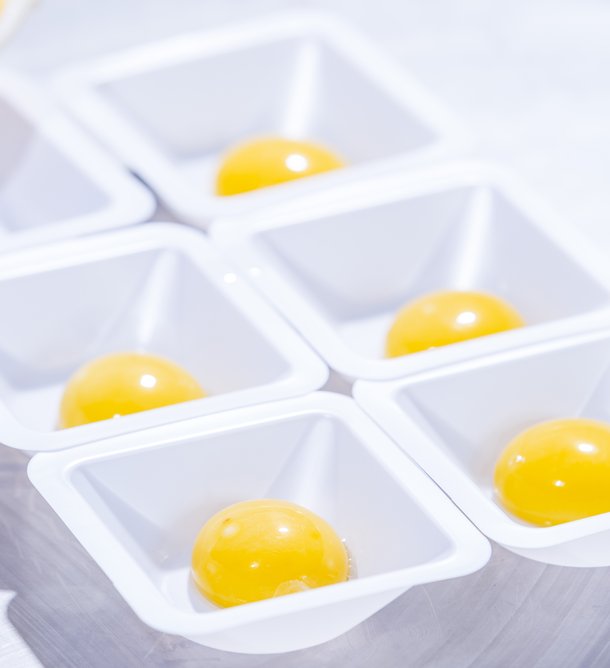
Long Shelf Life
The next time when you buy a box of eggs, have a look at the egg carton. You will notice that the egg carton comes with a sell by, or best before date rather than an expiration date. Your eggs should be edible for a 3-4 weeks after the sell by date, and for 1-2 weeks after the best before date (when refrigerated). If you’re not sure whether the eggs are still good there is a quick and easy option to see if they are still good by testing their buoyancy.
Eggshells are porous, the pores allow air to move through them. As eggs age, they take in air and develop an air pocket. In general, you can test the freshness of an egg by placing it in a cup of water. If the egg floats, it indicates the egg is old and has a very large air pocket, in which case you should pass on eating it. If it remains on the bottom, the egg should be safe to eat. To be extra sure of an egg's freshness, you can smell the egg before eating it. Crack it and put it in a bowl, if it smells rotten, it is advised to pass.
A true protein bomb, not only the whites but also the yolk
Not known by many people, but both the egg white and the egg yolk contain about the same amount of protein each (depending on the egg size, it is about 3 grams of protein each). While we traditionally associate egg whites with protein, they don't really have that advantage over their yellow counterpart. The biggest difference is in the calories: while a single yolk contains 3 grams of protein for 60 calories, a single egg white provides you with 3 grams of protein for just 15 calories. So, leaving out the yolk means you can get an equal amount of protein for fewer calories. Due to the high levels of other essential nutrients in egg yolks (yolks are much higher in B vitamins, folate and vitamins A, D and E) it is recommended you eat them as well
Eggs are one of the few dietary sources of vitamin D
Most people “consume” vitamin D through exposure to natural sunlight. You can also consume vitamin D through food-but your options are fairly limited. Besides milk, salmon, sardines, herring and tuna, eggs are among the best (and few) dietary sources of this immune boosting vitamin.
What does the label tell you?
When you look at the egg shelve in the grocery store, you might get lost with all the different labels or codes. We have tried to explain their meaning to you:
Cage-free — These hens are free from the confines of a cage, but this doesn’t mean they have access to the outdoors. More often, they are free to roam on the floor or the aviary system inside a barn. The birds’ living conditions can vary widely.
Natural — to be honest, really anyone can use the term “natural” to describe the eggs they pack and sell. Don’t fool yourself and avoid paying a premium price for these “natural” labeled eggs.
Free-range — This means the laying hens are free to roam the outdoors at some point, but depending on the region in the world the laying hens are kept it can be that there is no regulation specifying how long is necessary. In these regions it is hard to know how long the hens are outside and how much outside access they have.
Certified Organic — Hens have access to the outdoors and are fed an organic diet. Depending on where you buy the eggs in the world, extra organic rules may be in place, think off laying hens kept with intact beaks, fed with GMO-free diets, or fed with local produced feed.
Egg codes within the European Union
On every egg that you can buy in the EU, you will find an egg code, which tells you where the egg is from. The first number in the code is a 0, 1, 2, or 3, and it tells us in which kind of housing system the egg was produced.
- 0 = organic egg production
- 1 = Free range egg production
- 2 = Indoor (barn or aviary egg)
- 3 = enriched and furnished cage
2-DE-45146 01
The 2 letters stand for the country in which the eggs were laid. Examples are: DE is the code for Germany, UK stands for the United Kingdom and ES stands for Spain.
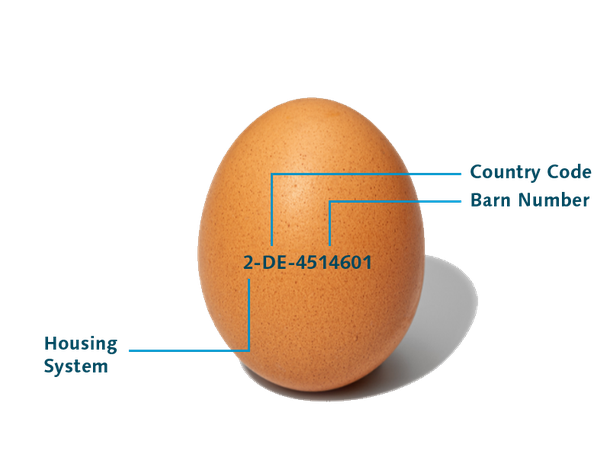
The last numbers stand for the farm where the laying hens are kept. An extra number is added if there are several flocks present in the farm containing hens of different ages. In this way, you know exactly where your egg comes from, and in what sort of environment the birds, that produced your egg, are kept.
Why your eggs bought at the grocery store won’t hatch?
In order to produce a fertile egg, a hen must mate with a rooster, as the rooster is responsible for the fertilization of the egg. As most of the laying hens around the globe are kept without the presence of a rooster, your eggs are most likely not fertile and will therefore not hatch. By accident, you might encounter an egg that looks like it is containing an embryo. Don’t worry, this is a blood or meat spot, that travelled along with the egg through the oviduct. Most egg sorting and grading machines will kick them out, and grade them as a grade B egg, but there is always a small chance 1 of these slips through and ends up in your egg carton.
